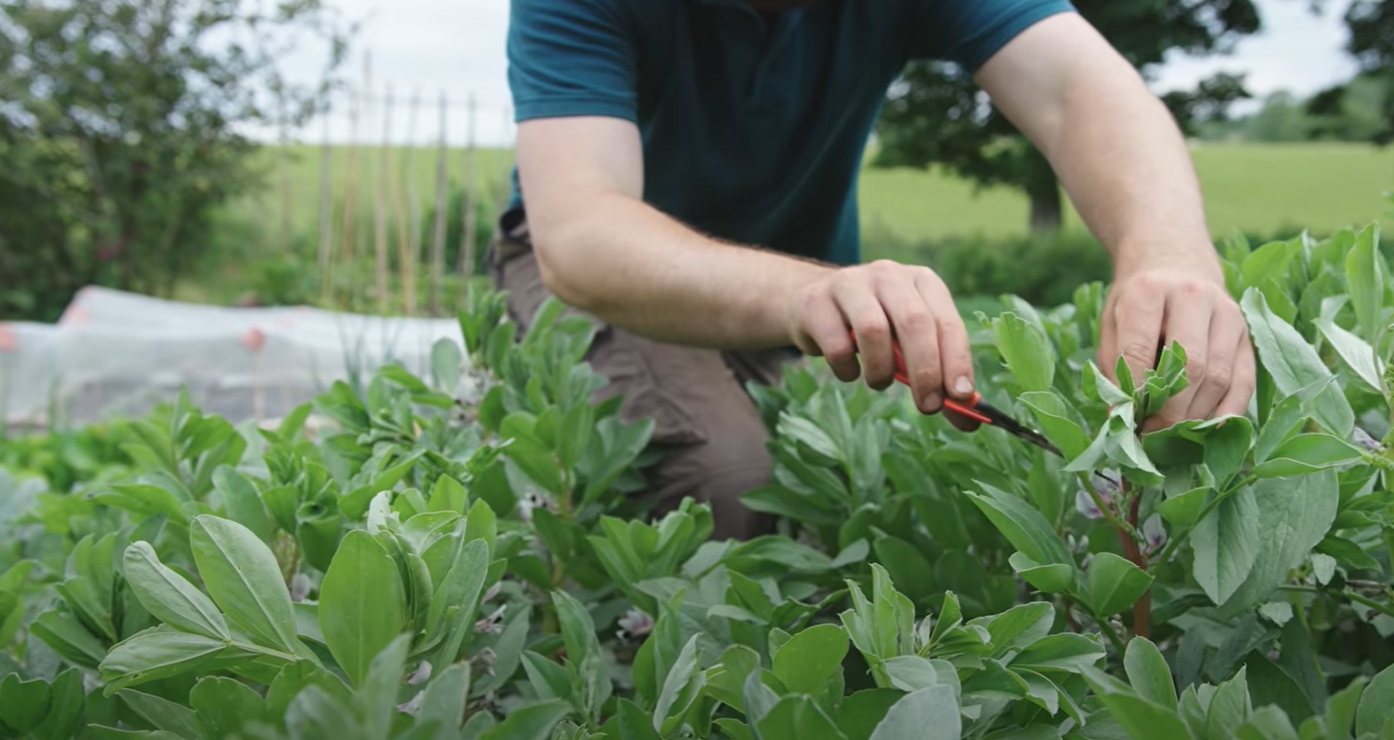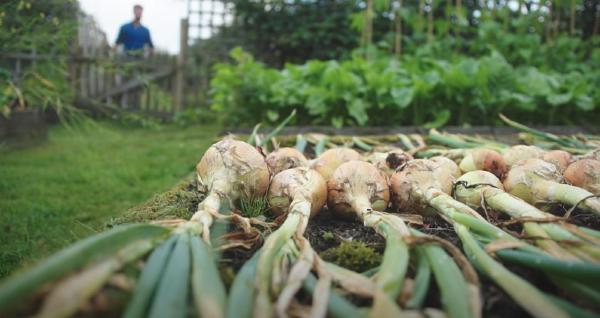In August, the garden may feel like a jungle. And yet, gaps may start to appear. Let’s see what Huw suggests to fill them out.
Thanks to Huw Richards for sharing his wisdom and knowledge! I wrote the following notes watching the video published on Huw Richards’ channel.
You can watch it using this YouTube link.
Default “setting”: spread compost
Huw suggests that the default “setting” is to cover the empty area with compost.
Why?
Because a healthy soil is key to success in the garden.
A healthy soil consists of minerals, organic matter and also all of the microbes such as bacteria and fungi.
And one way to promote a healthy soil is by using methods such as the No Dig method.
I’ve been using this method for 3 years now. At first, I was experimenting to find the materials.
In fact, with the No Dig method, you want to apply light layers of mulch of compost of around two to three centimeters.
But how do you find that compost?
If you were a commercial gardener like Charles Dowding, you could make you own. But most of us aren’t.
So this year, I’ve found how to find a large amount of compost: in France, it seems that places, where you can buy sand, gravels and other stony products, you can also buy organic compost in bulk.
For me, it’s a place nearby (10 min drive) and the ton of compost costs 48 euros.
The weight-to-volume ratio is 1 kilogram = 2 liters. So for 1000 liters or 1 meter cube, I need to buy 500 kg.
Compost can be used as a protective layer for the soil.
You have a choice then. Either:
- you plant some crops that will be ready late fall, e.g., radish, lettuce, turnips and spinach, at least in zone 8 climate. For more details, you can watch this vlog from Liz Zorab.
- you let the land rest by applying some cardboard weighted down.
In the latter case, it will be ready in the spring and it will be free of weeds.
Try out things
Huw says:
One of the most enjoyable parts of growing food is when you push against the norm and against common wisdom and try something different, and when you get pleasantly surprised that something new, that isn’t really recommended, actually turns out well for you, then that’s a huge sense of joy and excitement.
To me, this is the fact that I tried kiwaï vine, that produces small fruits rich in vitamin C.
It’s found in my garden for 3 years now.
We planted a second vine this winter because the first one is so productive.
After a false start on the first year (we had severe frost in April 2021), last year saw a successful harvest of a bit of fruits.
This year, it will be even better.
I haven’t heard about kiwaï before I tasted it in a local farmer market near our home.
Then I found it in the gardening store and purchased it.
It’s easy to plant and rather small at the beginning. Yet, it will grow taller than you.
It likes to climb a regular fence meshes with 10 cm squares.
Another test I did, which is now not a test but a regular thing we do in our garden, is the No Dig method.
Why did I pick it up? Because I can spend energy digging in the garden. I can’t buy the petrol-powered tools to till the soil either.
So No Dig made perfect sense.
Also, Huw gives the example of planting broad beans in August just to try and see what happens.
For example, did you know you can eat the top of the plant as shoots? I didn’t!

Nature can surprise you. It can bounce back sometimes.
